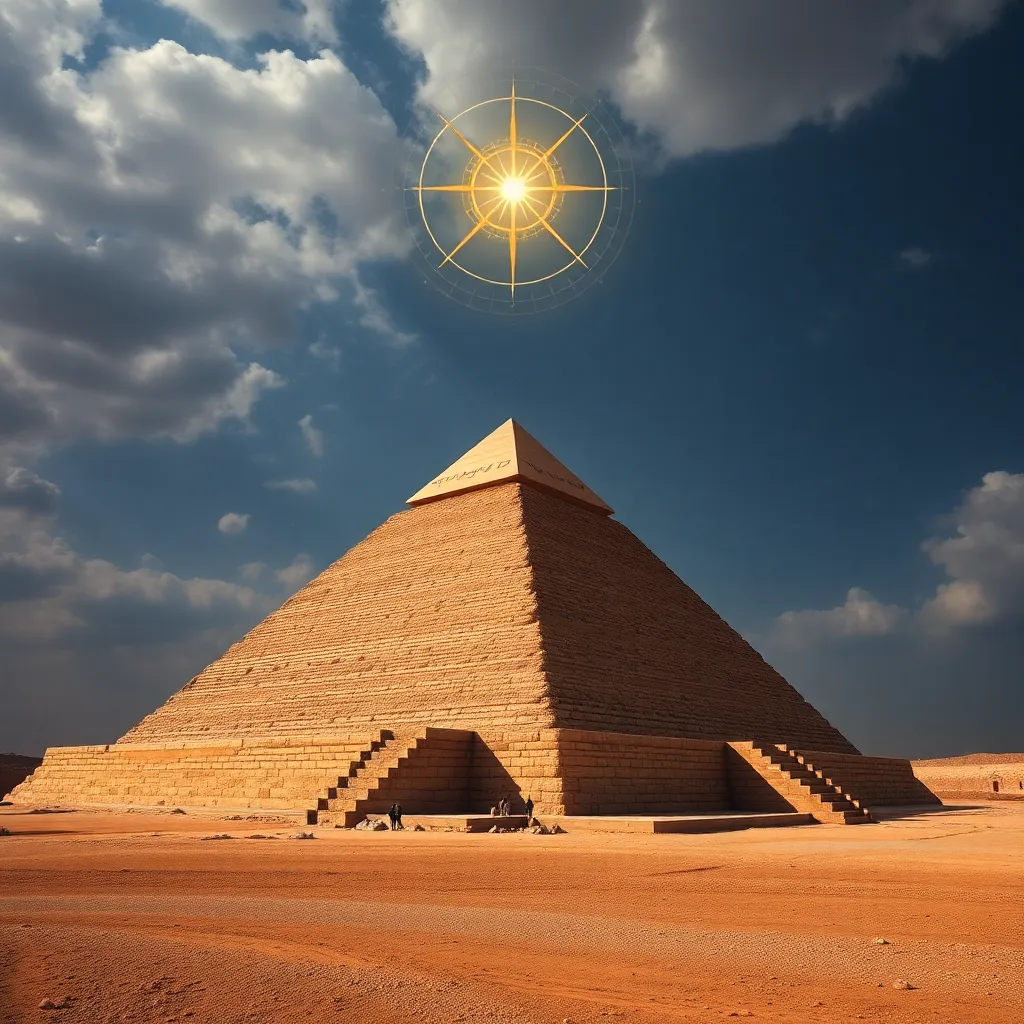The Great Pyramid’s Alignment: Astronomical Precision in Ancient Egypt
I. Introduction
The Great Pyramid of Giza, one of the most iconic structures in the world, stands as a testament to the ingenuity and advanced understanding of ancient Egyptian civilization. Built during the Fourth Dynasty of the Old Kingdom, it is the largest of the three pyramids on the Giza Plateau and serves as a monumental tomb for Pharaoh Khufu.
The alignment of the Great Pyramid has fascinated historians, archaeologists, and astronomers alike, revealing insights into the technological prowess of its builders and their understanding of astronomy. This article explores the historical background of the Great Pyramid, the significance of its astronomical alignment, and the implications of this precision in the context of ancient Egyptian society.
II. Historical Background of the Great Pyramid
The Great Pyramid was constructed around 2580–2560 BC, making it over 4,500 years old. It served as the burial site for Pharaoh Khufu, who was believed to be a divine ruler. The pyramid was originally covered in casing stones that reflected sunlight, making it shine like a “gem” in the desert.
In ancient Egyptian culture, pyramids were more than mere tombs; they were part of a larger religious framework that connected the deceased with the gods. The construction of the Great Pyramid marked a significant achievement in the architectural and engineering capabilities of ancient Egyptians. Key architectural innovations included:
- Use of large limestone and granite blocks
- Complex internal chambers and passageways
- Precise geometric planning and alignment
III. Understanding Astronomical Alignment
Astronomical alignment refers to the orientation of a structure in relation to celestial bodies, such as stars and planets. In ancient Egypt, the movement of celestial bodies was closely observed, and this knowledge influenced various aspects of life, from agriculture to architecture.
Ancient Egyptians employed various methods for celestial observation, including:
- Using the heliacal rising of stars to mark seasons
- Observing the position of the sun at different times of the year
- Employing simple tools like the merkhet (a sighting tool) for alignment
Astronomy played a vital role in Egyptian society, guiding their agricultural cycles and religious practices. The alignment of the Great Pyramid reflects this deep connection to the cosmos.
IV. The Great Pyramid’s Geographical Orientation
The Great Pyramid is remarkably aligned with the cardinal points—north, south, east, and west—almost perfectly. This alignment is not merely a coincidence; it showcases the advanced surveying techniques employed by the Egyptians.
When compared to other ancient structures, the Great Pyramid’s orientation is among the most precise. Other notable structures that exhibit astronomical alignment include:
- The Temple of Karnak
- Stonehenge in England
- The Mayan pyramids in Central America
To achieve this precision, ancient Egyptians likely used techniques such as:
- Observing the stars and their positions
- Using a plumb bob and sighting rods for straight lines
- Employing the sun’s shadow to determine cardinal directions
V. The Role of the Stars in Pyramid Alignment
Stars held significant importance in ancient Egyptian mythology and cosmology. Orion’s Belt, in particular, was associated with Osiris, the god of the afterlife and resurrection. The alignment of the Great Pyramid with these stars symbolizes the connection between the pharaohs and the divine.
Other constellations and celestial bodies also played crucial roles in the alignment and orientation of the pyramids:
- The North Star (Polaris) represented stability and was a guide for navigation.
- The sun was associated with Ra, the sun god, and its movement dictated many religious practices.
Evidence of star-based navigation techniques suggests that the ancient Egyptians had a sophisticated understanding of astronomy, which they applied to their architectural projects, including the pyramids.
VI. Theories and Debates Among Scholars
Scholars have proposed various theories regarding the astronomical alignment of the Great Pyramid. Some believe that the pyramid was aligned to the cardinal points based on stellar positions, while others argue that solar alignments were more significant.
Evidence supporting these theories includes:
- Alignment with the true north, which differs from magnetic north.
- The use of astronomical observations recorded in ancient texts.
However, some theories have faced challenges, particularly regarding the methods used for achieving such precision. Modern technology, including laser scanning and astronomical simulation, has played a crucial role in advancing our understanding of ancient Egyptian techniques and their implications.
VII. Implications of Astronomical Precision
The precision of the Great Pyramid’s alignment provides significant insights into the knowledge and capabilities of ancient Egyptians. It reflects their advanced understanding of geometry, engineering, and astronomy, which were crucial for monumental architecture.
This architectural precision influenced later architectural practices across various cultures, showcasing the enduring legacy of ancient Egyptian engineering. Additionally, it highlights the broader implications for our understanding of ancient civilizations, showcasing their ability to integrate scientific knowledge with cultural and religious beliefs.
VIII. Conclusion
In summary, the alignment of the Great Pyramid of Giza is a remarkable achievement that reflects the advanced astronomical knowledge of ancient Egyptians. The careful consideration of celestial bodies in the construction of this monumental structure underscores the significance of astronomy in their society.
The Great Pyramid not only serves as a tomb for Pharaoh Khufu but also stands as a symbol of the connection between the heavens and the earth, the divine and the mortal. As we continue to explore and research ancient astronomical practices, we gain deeper insights into the complexities of ancient civilizations and their legacies.




